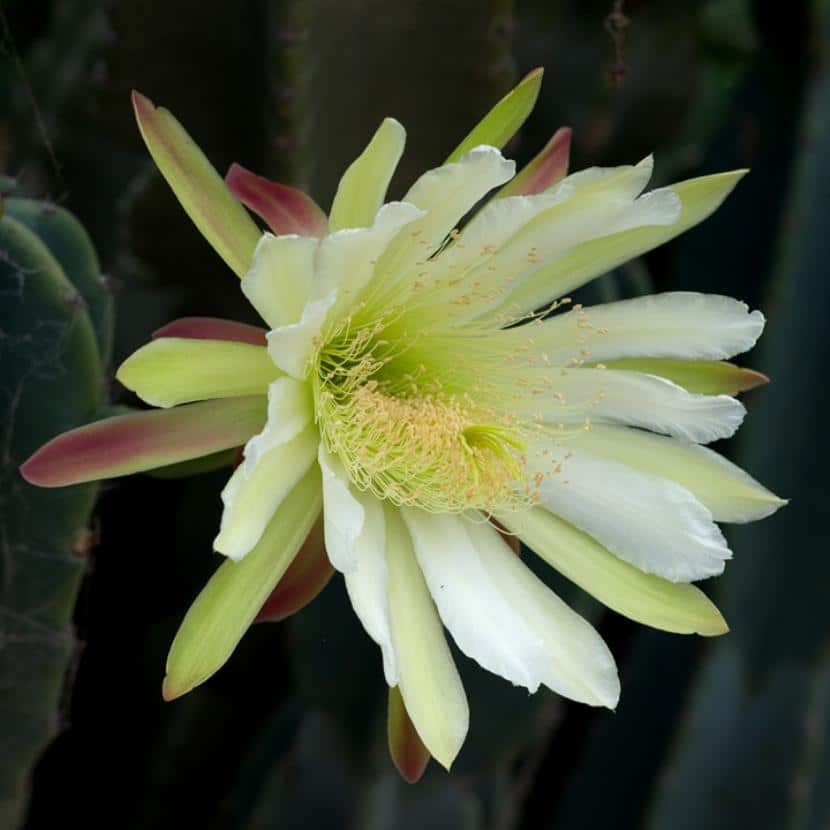
El Computer cactus, whose scientific name is Cereus peruvianus, is a succulent cactus plant that has become very popular thanks to the myth that it is capable of absorbing radiation emitted by PCs. However, its flowers are very beautiful and do not require much care, being able to be inside the home -always in a room with plenty of natural light-, or outside if the weather is mild.
It is a fast-growing plant, which does not usually exceed 15 meters in height, and has a superficial root system, making it ideal to keep in a pot throughout its life.
How is the Cactus computer?

Our protagonist, known by the common names candelabra cactus or Uruguayan cardón, is a plant belonging to the genus Cereus in the cactus family, Cactaceae. It grows naturally in the eastern sector of the Southern Cone of South America (Brazil, Uruguay, eastern Argentina), although today it can be found in warm-temperate gardens around the world.
Its stems are columnar, having between 6 and 8 ribs 2,5cm deep. The spines are acicular, brown in color, with a length between 0,5 and 1cm with a longer central one of up to 5cm. The flowers, which begin to sprout when the specimen is 5 or 6 years old, are large, up to 16cm in length, white in color.
What care do you need?

If you want to have a copy and you don't know how to take care of it, don't worry. Here is your care guide:
- Location: outside in full sun; indoors it must be placed in a room with plenty of natural light.
- Soil or substrate: It must have good drainage (you will find more information on this subject in this article).
- Irrigation: moderate in summer, somewhat scarcer the rest of the year. In case of doubt, he should check the humidity of the soil by inserting a thin wooden stick and check if it comes out practically clean, which would indicate that it is dry and that therefore it can be watered, or if it comes out with a lot of soil attached which would indicate that it is still very wet.
- Subscriber: During spring and summer it is advisable to fertilize with mineral fertilizers such as Nitrofoska, pouring a small spoonful every 15 days on the surface of the substrate.
- Transplant or planting time: in spring.
- Multiplication: by seeds in spring or by cuttings in spring-summer.
- Rusticity: supports frosts down to -3ºC.
What did you think of this plant?